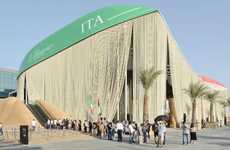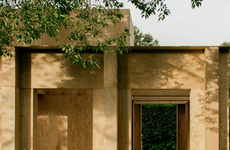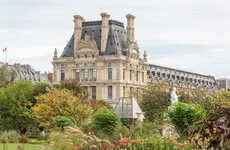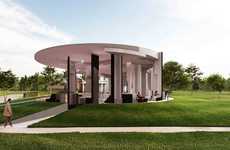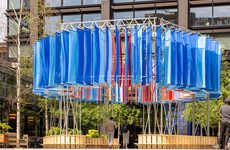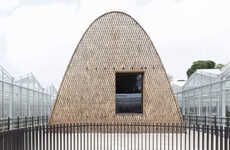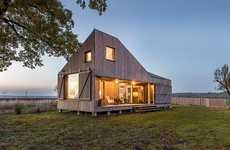
The 'Circular Pavilion' in Paris Utilizes Reclaimed Building Materials
Michael Hemsworth — December 17, 2015 — Eco
References: encoreheureux.org & contemporist
The 'Circular Pavilion' is an example of how reclaimed building materials are being put to use within the world of architecture to create beautiful yet eco-friendly designs. Situated in Paris, the 'Circular Pavilion,' which is designed by the architecture firm Encore Heureux, features 180 recycled wooden doors that adorn the exterior and add charm, character and personality.
The 'Circular Pavilion' is located on the parvis de l’Hôtel de Vill where it will house everything from exhibitions, to workshops. Although the design is currently in a temporary location, it will be relocated to its permanent home in Paris' 14th district to be used as a sports association clubhouse.
A beautiful example of how reclaimed building materials can be used within modern architecture, the 'Circular Pavilion' makes a charming addition to the Paris cityscape.
The 'Circular Pavilion' is located on the parvis de l’Hôtel de Vill where it will house everything from exhibitions, to workshops. Although the design is currently in a temporary location, it will be relocated to its permanent home in Paris' 14th district to be used as a sports association clubhouse.
A beautiful example of how reclaimed building materials can be used within modern architecture, the 'Circular Pavilion' makes a charming addition to the Paris cityscape.
Trend Themes
1. Reclaimed Building Materials - The trend of incorporating recycled materials into architecture creates opportunities for sustainable construction practices.
2. Circular Design - Circular design principles are being embraced in architecture to reduce waste and promote sustainable building practices.
3. Temporary Structures - Designing attractive, temporary structures can be a cost-effective and eco-friendly solution for events and community activities.
Industry Implications
1. Construction - The construction industry can embrace the use of recycled materials to create eco-friendly and cost-effective structures.
2. Architecture - The use of circular design principles and temporary structures presents an opportunity for architects to create innovative and sustainable designs.
3. Event Planning - Creating temporary, eye-catching structures using reclaimed materials can elevate event design while promoting a sustainable ethos.
3.9
Score
Popularity
Activity
Freshness


